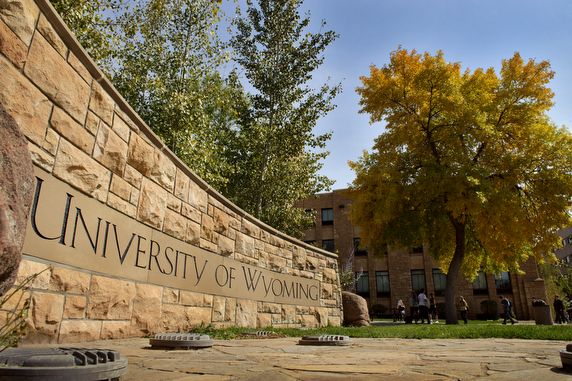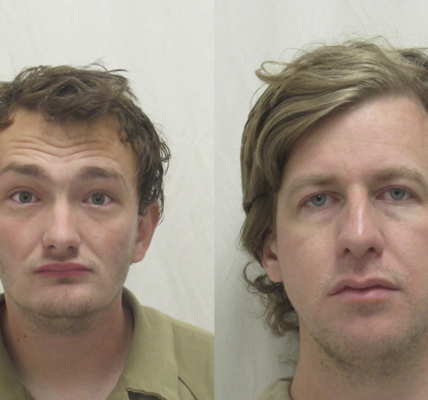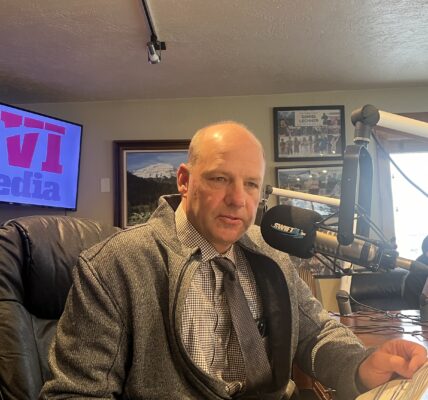By Daniel Bendtsen, WyoFile.com
In the wake of drastic budget cuts and significant restructuring plans, the University of Wyoming’s trustees hope American Recovery Plan Act funds can provide a lifeline for certain programs.
Trustees are narrowing in on a list of requests they hope the Legislature or Gov. Mark Gordon will agree to fund with the federal relief dollars. The University has compiled about $315 million in requests, Trustee John McKinley said last week during a meeting of the trustees’ budget committee.
Many of the wish-list items are aimed at jumpstarting new programs that UW administrators announced this month as part of a proposed restructuring of the university.
The ARP requests discussed Wednesday include:
- $20 million for a proposed Center of Entrepreneurship and Innovation.
- $25 million to help launch the School of Computing.
- $50 million to fund UW’s portion of the Wyoming Innovation Partnership.
- $1.2 million to help launch the Wyoming Outdoor Recreation, Tourism and Hospitality Initiative.
All programs are part of the proposed reorganization.
The university also wants millions in ARP money for existing UW initiatives, like upgrading College of Agriculture facilities and investing in the university’s floundering Tier 1 Engineering ambitions.
The ARP request also includes a $20 million ask to help hire new faculty — especially those in computing and data science — and provide them with the resources to launch programs.
“We often fail in recruiting faculty because of lack of money for startup funds,” President Ed Seidel said. “People would want to come here, but they just aren’t getting the startup that they need. So we thought, given resource requirements that we’ve got right now, this in effect would be a front for the provost and the vice president for research to help recruit faculty across the university.”
Barring ARP funding, UW has proposed launching some of the new programs by diverting money from other budgets on campus.
“We can’t continue to do everything with less. We need to think about the programs that are a priority for the university and a structure for the university that makes sense,” newly hired Provost Kevin Carman told the trustees when unveiling the plan in July.
UW administrators propose to fund new programs by cutting programs with low enrollment, reducing the number of departments and laying off up to 75 employees. Those proposed cuts would total $13.6 million.
Ultimately, the $13.6 million reduction would only save UW $3.1 million in overall spending, since UW plans to use $5 million from academic cuts to help pay for new dorms and a parking garage, while using $5.5 million to help to pay for the administration’s new proposed programs.
UW is soliciting feedback on the proposed reorganization until Oct. 1, with Carman hosting town hall meetings through September.
Despite a slew of cuts the university has faced in recent years, trustees believe the Legislature is likely to approve just a fraction of the $315 million in ARP funding that’s been requested and, as such, worked Wednesday to identify top priorities.
The budget committee plans to vote on a priority list of requests at its Aug. 9 meeting.
UW is automatically receiving $18.5 million from ARP, with any additional funding to be determined by either Gordon or the Legislature. Of that $18.5 million, UW is required to spend $9.4 million on direct aid to students.
The state has more than $1 billion in ARP funding to distribute. The Legislature originally planned a special session this summer to allocate the funding, but canceled the session to have more time to determine how to spend the federal funds.
Seidel anticipates that Gordon might unilaterally fund aspects of the Wyoming Innovation Partnership, but the Legislature will probably weigh in on the other ARP requests, he said.
Along with the discussion regarding the ARP requests, the budget committee also discussed its impending block grant request to Gordon for the upcoming 2023-2044 biennium. That block grant is general state funding for the university allocated every two years by the Legislature and typically includes at least $300 million. UW officials said they plan to request the same sum they received for the current biennium — with a few additions.
UW is hoping the Legislature will provide $9 million in additional funding for UW to provide salary increases of about 3%.
With the opening of new facilities like the Science Initiative building, Seidel said, UW also needs more funding for maintenance and utilities.
The board of trustees isn’t scheduled to finalize its block grant request until August, but according to the proposal discussed Wednesday, UW would request $1 million for utilities, $320,000 for “one-time capital equipment needs” and $250,000 for more custodians and additional positions in operations.
UW is also looking to request $1 million for additional funding to boost its research efforts, namely the administration’s “pre-award services,” which help faculty solicit grants.
In addition, the administration hopes the state will provide just over $1 million in ongoing funding for seven positions within the College of Agriculture, along with $1.7 million in one-time funding that would be used to help newly recruited agriculture faculty members establish their programs at UW.
Gordon will send his final budget proposal to the Legislature by Nov. 15. The Joint Appropriations Committee will then vet UW’s requests in December ahead of the 2022 budget session.
Carman told the trustees in July that the university’s proposed reorganization “will impact the culture of the university and deserves a robust discussion.”
The plan calls for $5.3 million in academic cuts, mostly through layoffs. However, administrators are also proposing to implement a 3% across-the-board cut to academic programs not involved in the reorganization, resulting in $1.2 million in savings.
Because the 2022 budget has already been finalized, Carman stressed that the expectation of 75 people who would “lose their job” is just an estimate, and that deans will have discretion in how to implement their cuts.
“That’s a ballpark. There’s not a list of individuals that we have that would lose their jobs,” Carman said.
Most are likely to be faculty, though some are expected to be staff, meaning non-academic employees like office workers or research assistants. Carman acknowledges that the cuts will be deeply felt.
“This plan will have an impact on our faculty and staff. These are real people with families. … This will have an impact on people that we care about,” Carman said.
UW spokesman Chad Baldwin told WyoFile in an email that it will actually be Carman, not the deans, who will make the final call on how cuts are implemented.
The Office of Academic Affairs will, however, appoint committees to provide recommendations on the specifics of reorganizing academic units.
Those committees, which will include deans or associate deans, “will be charged with organizing units within specific budget restrictions, not with a certain number of job reductions in mind,” Baldwin wrote.
Those committees are set to host “listening sessions” with affected departments in coming months.
When UW cut faculty positions in 2016 and again in 2020, those cuts came mostly through attrition and retirement incentives.
The university’s present situation means it’s no longer reasonable to rely on attrition to save money, Baldwin said.
“The non-academic units affected by those eliminations have reached the point that they wouldn’t be able to fully function if further reductions took place there,” Baldwin said. “We are to the point that we must target academic programs. Second, the previous reductions, primarily because of timing, were not done from a strategic standpoint. The current proposal takes a much more strategic approach to make sure the university is fulfilling its mission as efficiently and effectively as possible.”
In recent years, UW officials have criticized the manner in which the university implemented $42 million of budget cuts in 2016. Those cuts came somewhat suddenly, and UW made them with a strategy of convenience: Axing vacant positions and encouraging early retirements, even if that meant some programs became overly depleted.
UW is trying to avoid that with the latest round of budget cuts, and Baldwin said deans are unlikely to have the flexibility to implement cuts merely by cutting vacant positions in lieu of laying off employees in programs that are targeted for reduction or consolidation.
After getting final recommendations from Seidel, the trustees are scheduled to vote on the proposed reorganization at their November meeting.
Carman said the plan will continue to evolve as they receive feedback from the campus community in coming months.
The cuts will also mean larger class sizes, with administrators expecting to receive at least $750,000 through “academic policy efficiencies.”
“About half of the classes we teach on campus have 12 or fewer students in them. We love to have small classes and a favorable student-faculty ratio, but there’s a point at which this just can’t be sustained,” Carman said. “We have many classes that have single-digit students in them and we have to think differently about how we teach.”
Meanwhile, employees and students would also see impacts aside from academic losses, like increased parking rates. UW administrators hope to bring in $500,000 more annually by increasing the price of parking passes, noting that UW has “by far the cheapest parking rates of any university in the region.”







